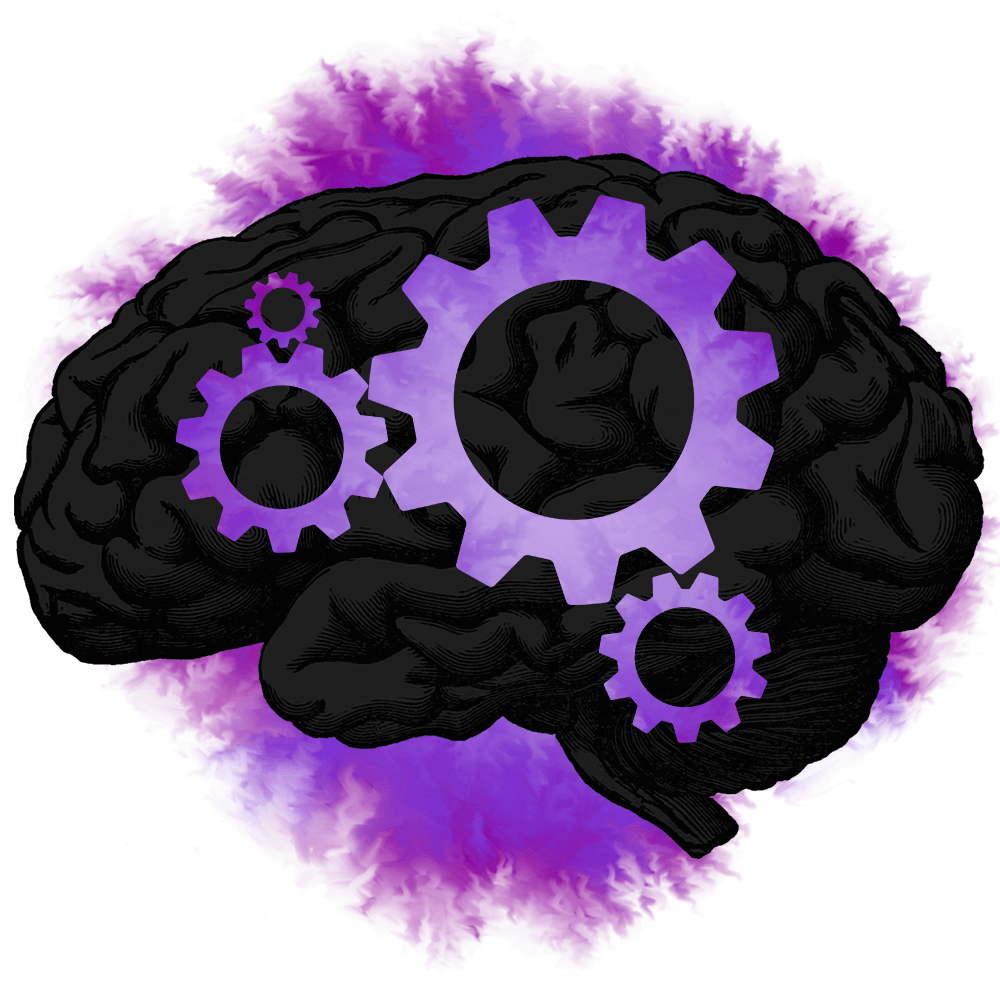When something happens, it’s an objective reality. How you experience the situation on the other hand – is not. You can elicit positive emotions from anything that happens by framing it in a way where it’s beneficial in some form.
Think about it this way.
A breakup can destroy you. You might spend months mourning this horrible loss that left an uninvited wave of devastation in your life.
Although it’s natural to go through the motions, can you see this situation through a different lens where it not only makes you feel better, but empowers you? Was the relationship ideal? Could you really see yourself settling down with that person? What new opportunities does this open up to you now?
Even though the event objectively happened, how you choose to look at it ev0kes different emotions. Just from having a different perspective about the same outcome, you might feel a very different way about it.
This is cognitive reframing, and it’s just one example of how mentally pivoting to a different point of view affects the reality that you experience.
What is cognitive reframing?

Cognitive reframing is a technique where you change your view of any perceived negative event to see it in a way that makes you feel better. The purpose of cognitive reframing is to change painful beliefs that hurt you into constructive beliefs that serve you.
We’re masters at jumping to conclusions, and those conclusions are often in the dimmest light. But what if you could assume something that makes you feel better about the situation?
Let’s say you were chatting with a romantic interest that you felt a good connection with, and suddenly that person stopped responding. Your first instinct might be to believe that you’ve done something wrong, or that there’s something wrong with you. But what if you framed it in a way where the person is just too busy to date and doesn’t have the energy to respond, rather than take it as a personal attack?
Which assumption in this situation makes you feel better? Is it a problem with you, or it’s a problem with them?
So instead of assuming the worst, cognitive reframing is to recognize when you’re assuming the worst about something, and logically changing your outlook of the situation to elicit better feelings.
You don’t have all the facts for most situations, meaning that the truth is really left to the narrative of your mind. You can fill in the blanks in a way that hurt you, or create a narrative that put you at ease.
Understanding cognitive distortions

The mind is a funny thing. So often it works against us to make out a situation to be much worse than it actually is. In your mind, a failure might feel like the end of the world. A painful emotion might make you feel completely worthless. Little things that happen can be blown out of proportion to cause a lot more pain than they should, and this is an issue.
When you’re perceiving something in a way that is very inaccurate to the reality of the situation, this is a cognitive distortion. It’s called this because you’re distorting a situation to be worse than it is.
The cure to cognitive distortions is rational thinking. As long as you rationally weigh up the situation and accurately assess it, your emotions will follow suit when you realize it’s not too bad.
Part of cognitive reframing is to recognize cognitive distortions and to bring them back to reality.
Here are some common forms of cognitive distortions:
- Overreacting: Blowing up a situation to be more severe than it really is
- Fixation: Only focusing on the negatives and neglecting anything positive to come from it
- Generalizing: Applying past experiences to all situations that are alike
- Catastrophizing: Anticipating that something terrible is going to happen without doing anything about it
The four steps of cognitive reframing
1) Write down the situation
Start by writing down the situation that’s causing you to feel a certain way. Write about your feelings, and what’s causing them. Try to identify what exactly is causing those painful feelings.
If a particular situation is causing these feelings, dig into the situation. What are you feeling and why does it matter?
Really try to get to the bottom of it to determine what the actual issue is.
2) Identify your thoughts and feelings
Draw a T and write down all your thoughts in one column, and feelings in the other.
Pay attention to the actual feelings that are being stirred up by the situation. Are you feeling resentment, guilt, anxiety, worry, shame? Sink into those emotions and write down all the feelings you’re experiencing
In the second column, write down your thoughts. What are your worries, fears, predictions? What tormenting thoughts are you experiencing?
3) Evaluate the narrative
Think about the evidence or information that both does and doesn’t support your theory. If you’re thinking someone doesn’t like you because they don’t make an effort to talk to you, write down evidence supporting this claim, and evidence that doesn’t support it.
This could include things like:
- They are generally welcoming to me
- They are introverted
- They have invited me to things before
4) Create a new narrative with the information
Now weigh up the information to determine how rational your thoughts and feelings are. Determine how accurate your narrative is, and replace it with a new narrative that is more accurate to the tangible evidence you wrote down in step 3.
Using the new information, create a narrative that makes you feel more at peace with the situation. Reinforce this new narrative until you genuinely believe it, and it seems like the most realistic option.
Reframing painful events in a healthier way

Every situation is subjective because perception is a personal phenomenon – no two people experience it the same as one another.
Imagine you encounter a dark night of the soul where your life feels like it’s falling apart. When you’re feeling this way, you can see the situation as only doom and gloom, that you’re a victim and god hates you.
But what if you saw this as an opportunity? Instead of seeing it as the end of the world, you look at this challenge as a deeply transformative process that you’re fortunate to experience. Sure, it’s not easy, but you know that you’re shedding things that no longer serve you and expanding your consciousness.
Suddenly, there’s a silver lining to the situation that you may not have noticed before. And by really feeling into the good of the situation, you leverage the situation to grow from it.
Avoid worst case scenario thinking
Naturally, we tend to focus on the worst-case scenario, which can lead us into negative spirals.
Everything has a silver lining. Seeing that silver lining is what creates optimism because there is always some good to come out of any given situation, whether you recognize it or not.
The big advantage of an optimist is that they will always see the bright side of any situation. Things might get ugly, but they will look for a way to find the beauty in it. You can always look at the good, so make a habit of doing so.
Challenge your thoughts and beliefs
Recently, I left behind my nomadic life and felt like I regressed a huge amount. Suddenly, I was back living with my mum, with no money, no car, and working in a cafe. I did not feel good about my life.
My mind would constantly jump to the defeatest, victim mindset. Poor me, I’m so lost, things are not going well for me. I would start spiraling downhill and get into a dark frame of mind.
But every time I started going into a cycle of self-pity, I caught myself. I challenged my beliefs. I disputed what my ego was telling me, that I’m a loser, a failure, that I’ll never make it in life.
Instead, I reframed the situation in a way that this is good.
I’m not paying rent. I can make some quick easy money. I don’t have distractions such as too many friends or dating which allows me to focus on my avocations. I get to spend time with my family, and this situation is temporary.
Yeah, sure. The situation isn’t perfect. But when I view it in a way where this is actually what I need right now, and this situation is giving me the incentive to meditate more, take courses, and focus on my work, I feel much more at peace.
So make sure you challenge the thoughts and feelings that pop up, and give them a run for their money.
Look at the higher perspective
If something is happening in your life that you don’t enjoy, ask yourself why it’s happening. Instead of getting caught in survival mode and exacerbating the situation, think about the higher perspective.
Why is this situation happening to you? What are you supposed to learn from it?
Looking at the higher perspective has helped me get through some challenging situations in my life. Mostly I give credit to my existential beliefs because I do believe there’s a higher power, and that destiny is real.
So I’ve learned to lean on these beliefs when things are difficult. Instead of falling into this painful cycle, I step backwards and look at the bigger picture of why it’s happening in the context of my life.
Don't fake the feelings
Looking at something from a different angle is done by taking something comparable on both sides and focusing on the positive aspects. It’s a way of consciously manipulating your outlook of a subjective event, to a positive perception.
But you do want to be a little careful of toxic positivity here, which is to suppress negative feelings by focusing on the positives. You want to be genuine with your feelings, but when you’re authentically seeing things in a way that draws positive emotions, it can help alleviate negativity.
Reframing is not the same as escapism. Escapism is trying to avoid a negative situation, while reframing is about reinterpreting something more healthily. It’s important not to be naïve, but to also not be paranoid by assuming the worst.
With that said, cognitive reframing is not about pretending to be happy. It’s not about avoiding a situation or smearing it with a facade of light. Cognitive reframing is about genuinely seeing a situation in a way that instills better feelings, and supporting this idea with logic and reason.
Adding context to things you witness
Imagine you see a car speeding down the road. The car cuts someone off and doesn’t give way when they should. Witnessing this reckless activity will initially make you think that the driver is an asshole, which instills feelings like anger and resentment.
Even though the driver could just be an asshole, you have no context to the situation. You jumped to a conclusion and never considered other possibilities. Since you have no context, your mind creates the narrative for this story, and the narrative you create is what makes you feel a certain way.
There is no way to tell whether the driver frantically driving someone to the hospital, or panicking because they’re late for an important event. Perhaps the person wasn’t aware and it was an accident.
Of course, this is no excuse for their behavior, but do any of these scenarios make you feel better than assuming that the person gets a kick out of making people angry?
We only get a small amount of factual information from everything we experience, but tend to make everything out to be something bad. But you have no idea. It’s left to your narrative.
So be aware of the narratives you create from anything you witness, and build the most logical conclusion instead of automatically filling in the context based on your previous experiences or prejudices.
Leverage painful events for your growth
How you perceive difficult situations in general is an important part of cognitive reframing.
I used to hate anything that challenged me. If I could have, I would have lived a very comfortable life where I never had to stretch myself. But thank god the universe gave me a boot up the ass and showed me that wasn’t an option. And because of that, I saw the other side.
So what did I learn?
Pain is a corridor for growth. The more you’re challenged in life, the more things you experience, the more you grow as a person. As there is a direct correlation between growth and happiness, believe me when I say it’s worth going through some struggles to gain that juicy wisdom.
So I challenge you to adopt this belief if you haven’t already. Instead of having an aversion to difficulty, look at how those difficult moments can serve your growth as a person. Ask yourself what you can learn when life is hitting hard, and how these lessons can make you a stronger, wiser, better person.
The way I see it is that every time something goes wrong, it’s an opportunity to explore myself. You will have a natural failsafe because when things are looking down, a piece of you will kick into action and look at the opportunity within the situation.

Reframing your memories
Think about a few situations in your life where something seemingly bad happened, but you assumed the worst. It ended up leaving a dark murky memory that still haunts you today, but what if you could diffuse that memory by going back and reframing it?
Think about an unpleasant memory that evokes painful emotions. Thinking about it might stir up feelings of guilt or shame, or maybe resentment.
Revisit the memory by reconstructing the scene and visualizing it playing out. Inspect the memory and look for details that you may have never noticed before.
Now, how can you reconstruct that memory with those new details? Maybe you’ll realize that it really wasn’t your fault. Maybe you’ll see it from a different angle where people were being unfair to you, or perhaps they didn’t explain something well.
Maybe the job interview that you failed was in your best interest because in retrospect, it doesn’t seem ideal at all. Maybe the date you never tried to kiss gave you obvious signs not to, so instead of feeling shame for not doing it, you’re glad that you didn’t push it.
Consolidate those affirming details into the memory and reinforce it. Now you will see that memory in a different light, which may give you some relief, or diffuse the painful emotions associated with it.

